The Jacobs Ladder quilt pattern is a timeless and versatile design, perfect for quilters of all skill levels. Its traditional appeal and simplicity make it a popular choice.
1.1 Overview of the Jacobs Ladder Quilt Pattern
The Jacobs Ladder quilt pattern is a classic design that combines simplicity and elegance, making it a favorite among quilters. It features half-square triangles and four-patch blocks, creating a striking visual appeal. This pattern is highly versatile, suitable for projects ranging from full-size quilts to baby blankets and home decor items. With free PDF patterns widely available, quilters can easily access step-by-step instructions to bring this timeless design to life. Its adaptability to various sizes and color schemes ensures endless creative possibilities for crafters of all skill levels.
1.2 Benefits of Using a Free PDF Pattern
Using a free PDF pattern for the Jacobs Ladder quilt offers numerous advantages. It provides instant access to detailed instructions, saving time and effort. The PDF format ensures clarity and portability, allowing quilters to print or view the pattern anywhere. Additionally, free patterns often include full-color illustrations and step-by-step guides, making the process easier for beginners. Many websites also offer customizable options, enabling quilters to adjust sizes and layouts according to their preferences. This convenience and flexibility make free PDF patterns an ideal choice for crafting a Jacobs Ladder quilt.

History and Origins of the Jacobs Ladder Quilt
The Jacobs Ladder quilt draws inspiration from biblical narratives, symbolizing Jacob’s divine vision. Its traditional design has evolved over centuries, blending simplicity with meaningful storytelling through fabric.
2.1 The Biblical Inspiration Behind the Name
The Jacobs Ladder quilt pattern draws its name from the biblical story of Jacob’s ladder, as described in Genesis 28:10-22. The ladder symbolizes a connection between heaven and earth, reflecting spiritual ascent. This quilt design often incorporates strips of fabric arranged to resemble the rungs of a ladder, creating a sense of movement and harmony. The name reflects the pattern’s timeless and meaningful symbolism, appealing to quilters who appreciate both tradition and spiritual inspiration in their crafting.
2.2 Evolution of the Pattern Over Time
The Jacobs Ladder quilt pattern has evolved significantly since its origins, adapting to changing fabric availability and quilting techniques. Originally inspired by biblical imagery, the design has remained timeless while embracing modern variations. Early versions often featured simple color schemes, while contemporary quilters experiment with bold combinations and diverse fabrics. The pattern’s versatility has led to its inclusion in various quilt sizes and styles, from traditional bed quilts to decorative wall hangings, ensuring its enduring popularity in the quilting community.
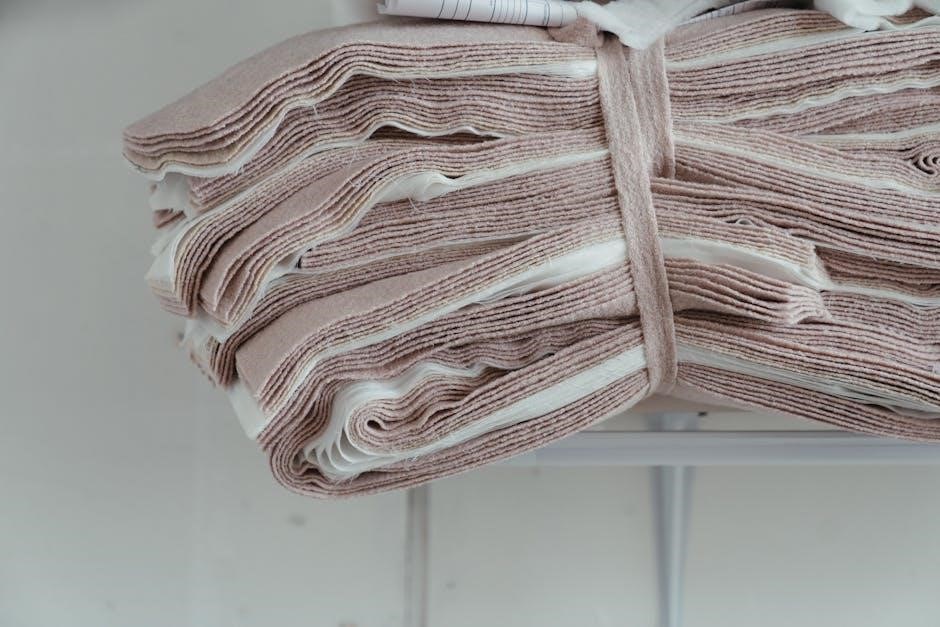
Where to Find the Free Jacobs Ladder Quilt PDF
The free Jacobs Ladder quilt PDF can be easily found on popular quilting websites like Fat Quarter Shop and other craft platforms offering downloadable patterns.
3.1 Top Websites Offering Free Download
Popular quilting websites like Fat Quarter Shop and The Quilting Land offer free downloadable Jacobs Ladder quilt patterns. These platforms provide easy access to PDF files, ensuring quilters can start their projects quickly. Additionally, craft communities and blogs often share free patterns, making it simple to find and download the design. These websites typically include step-by-step instructions and material lists, making the process hassle-free for both beginners and experienced quilters.
3.2 How to Download and Print the PDF
To download the Jacobs Ladder quilt pattern, visit trusted websites like Fat Quarter Shop or The Quilting Land. Locate the PDF link, click to download, and save it to your device. Open the file using a PDF reader, ensure your printer is set to 100% scale, and print the pattern. For accuracy, print a test block first. Disable pop-up blockers if prompted, and ensure your printer settings match the pattern’s requirements. This ensures the design prints correctly for precise cutting and sewing.
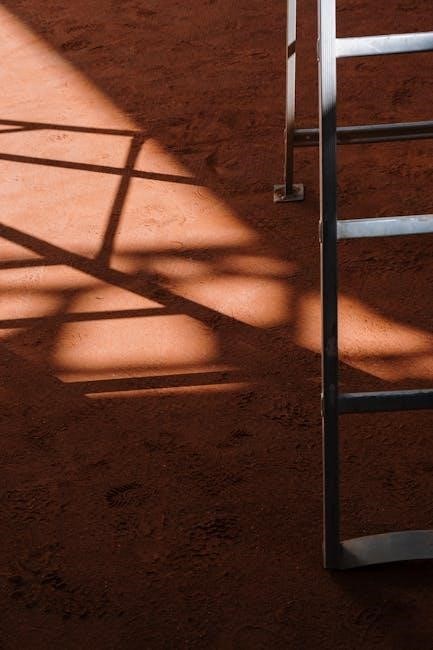
Materials and Tools Needed
Gather essential materials like fabric, threads, and batting. Use light to dark fabrics for contrast. Ensure basic quilting tools are ready for precise cutting and sewing.
4.1 Fabric Requirements for the Quilt
Select three fabrics ranging from light to dark for a classic Jacobs Ladder design. For a lap-sized quilt, use 1.5 yards of each fabric. A queen-sized quilt requires 3.5 yards, while a baby quilt needs 1 yard. Background fabric should complement the main fabrics. Allocate 1 yard for the background and 2/3 yard for borders. Backing fabric typically needs 4 yards for a queen size. Pre-wash all fabrics to ensure shrinkage is accounted for, and choose high-quality quilting cotton for durability and a professional finish.
4.2 Essential Quilting Tools and Supplies
Gather a rotary cutter, mat, and quilting ruler for precise fabric cutting. Sharp scissors, pins, and a sewing machine are must-haves. Use a walking foot or even feed foot for smooth stitching. Select matching thread colors and quilting needles. Additional supplies include batting, quilting gloves, and a seam ripper. Ensure all tools are of high quality for durability and professional results. Keep a lint roller handy to manage fabric scraps. These essentials will streamline your quilting process and enhance your creativity with the Jacobs Ladder pattern.
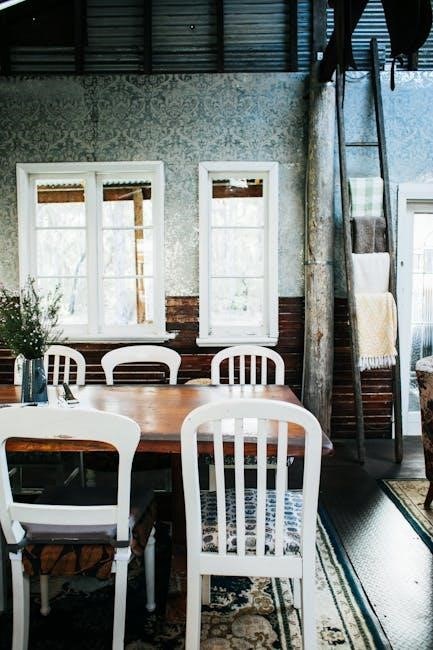
Step-by-Step Instructions for the Jacobs Ladder Quilt
Start by cutting fabric into required squares and strips. Piece half-square triangles and four-patch blocks. Assemble the Jacobs Ladder block, then sew blocks together to form the quilt top.
5.1 Cutting Fabric for the Blocks
Begin by selecting three fabrics ranging from light to dark for a classic Jacobs Ladder design. Cut squares and strips according to the pattern measurements. For a 12-inch block, cut squares at 5.5 inches and strips at 2.5 inches wide. Ensure accurate cuts to maintain block proportions. Label each piece to avoid confusion during assembly. This step sets the foundation for precise piecing and a professional finish.
5.2 Piecing the Half-Square Triangles
Start by pairing contrasting fabrics for the half-square triangles (HSTs). Place two squares right sides together and stitch ¼” on either side of the diagonal line. Cut along the marked line to create two HSTs. Press seams toward the darker fabric for a crisp finish. Trim excess fabric, ensuring triangles measure accurately. This method ensures sharp points and aligned seams. Repeat for all required HSTs, organizing them by block. Precision in this step is key for a polished Jacobs Ladder design.
5.3 Assembling the Four-Patch Blocks
To assemble the Four-Patch blocks, arrange four half-square triangles (HSTs) into a 2×2 grid; Place two HSTs with opposite orientations in the top row and two more in the bottom row, ensuring the triangles alternate directions. Stitch the HSTs together, aligning edges carefully. Press seams to one side for a flat finish. Trim any excess fabric to ensure the block lies smooth. This step creates the foundational unit of the Jacobs Ladder design, setting the stage for the larger quilt assembly. Precision is key for a cohesive look.
5.4 Constructing the Jacobs Ladder Block
Arrange four Four-Patch blocks side by side, alternating their orientation to create the ladder-like design. Sew the blocks together, ensuring seams align perfectly. Press the seams flat to maintain a smooth surface. Add contrasting strips between the blocks to enhance the visual appeal. This step brings the iconic Jacobs Ladder pattern to life, with its signature layered strips creating a 3D illusion. Accurate piecing and pressing are crucial for a professional finish. The result is a striking block that forms the heart of the quilt design.
5.5 Sewing Blocks Together
Once all Jacobs Ladder blocks are constructed, arrange them in a grid according to your quilt’s size. Sew the blocks together in rows, aligning seams carefully to maintain the pattern’s integrity. Use a 1/4-inch seam allowance and press seams to one side for a flat finish; Pin blocks together to ensure accuracy and avoid misalignment. Sew row by row, then join the completed rows to form the quilt top. This step requires patience and precision to achieve a professional-looking result. The final quilt top will showcase the Jacobs Ladder design beautifully.
5.6 Adding Borders to the Quilt
Add borders to enhance your Jacobs Ladder quilt’s appearance. Start by cutting border strips to your desired width, ensuring they match the quilt’s length and width. Sew side borders first, aligning edges carefully, then attach top and bottom borders. For a polished look, miter the corners by sewing strips at a 45-degree angle. Press seams flat to ensure a smooth finish. Choose fabrics that complement the quilt’s design, whether solid or patterned, to create a cohesive and visually appealing border that frames the Jacobs Ladder pattern beautifully.
5.7 Quilting and Binding the Finished Quilt
Once your Jacobs Ladder quilt top is complete, layer it with batting and backing fabric. Quilt using your preferred method—straight-line, free-motion, or hand-stitching. For binding, cut strips of fabric, typically 2.5 inches wide, and sew them together. Attach the binding to the quilt edges by machine, folding at corners for a neat finish. Hand-stitch the binding to the quilt back for a polished look. Press seams flat to ensure a smooth, professional result. Choose binding fabric that complements the quilt’s design for a cohesive final touch.
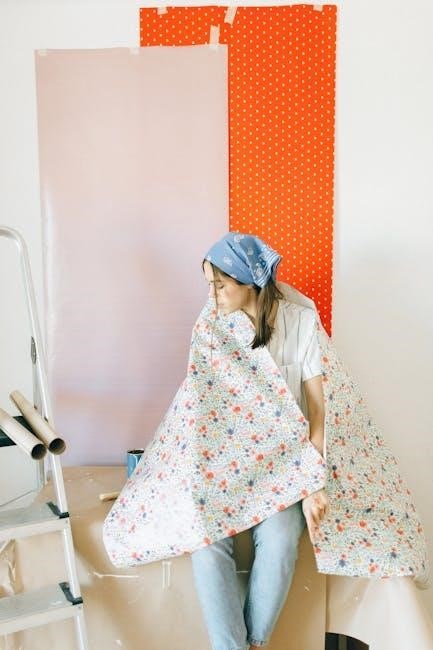
Variations of the Jacobs Ladder Quilt Pattern
The Jacobs Ladder quilt pattern offers countless variations, from modern color schemes to different sizes. Discover contemporary twists while maintaining its classic charm and versatility.
6.1 Color Variations and Combinations
The Jacobs Ladder quilt pattern lends itself beautifully to a wide range of color variations, from traditional two-tone schemes to vibrant multi-color designs. Quilters can experiment with light and dark contrasts, gradient effects, or even bold, modern palettes. For a classic look, stick to complementary colors like navy and white or red and green. For a contemporary twist, try ombre shades or bright, clashing hues. The pattern’s versatility allows for endless creativity, ensuring each quilt reflects the maker’s unique style and preferences. This flexibility makes it ideal for both traditional and modern quilting projects.
6.2 Size Options for Different Projects
The Jacobs Ladder quilt pattern is available in various sizes, catering to diverse projects. Lap quilts, baby quilts, and queen-sized quilts are popular options, offering flexibility for different needs. The lap size is ideal for snug throws, while the queen size provides a statement piece for beds. Baby quilts are perfect for nurseries or gifts. This versatility allows quilters to adapt the pattern to suit their desired project, ensuring the design fits seamlessly into any home decor or gifting scenario. The size options make it accessible for quilters of all skill levels and preferences.
6.3 Modern Twists on the Classic Design
Modern quilters often infuse the Jacobs Ladder pattern with fresh twists, blending traditional elements with contemporary styles. Bold color schemes, modern fabrics, and innovative layouts breathe new life into the classic design. Experimenting with block orientation or adding appliqué details can create a unique aesthetic. Some quilters incorporate gradient colors or ombre effects for a dynamic look. These modern interpretations keep the Jacobs Ladder quilt pattern relevant while maintaining its timeless charm, allowing quilters to express their creativity and adapt the design to suit current trends and preferences.

Projects You Can Make with the Jacobs Ladder Pattern
The Jacobs Ladder pattern offers versatility for various sewing projects, including full-size quilts, baby quilts, wall hangings, placemats, table runners, and home decor, inspiring creativity.
7.1 Full-Size Quilts for Beds
The Jacobs Ladder pattern is ideal for creating stunning full-size quilts for beds. Available in sizes like Queen (99 x 87) and oversized Queen (109 x 87), it offers flexibility for any bedroom. To make a Queen-size quilt, you’ll need 14 yards of four fabrics, 1 yard for the background, and additional materials for borders and backing. The pattern’s step-by-step instructions guide you through piecing half-square triangles and assembling the blocks. It’s a classic design that adds warmth and elegance to any room, perfect for experienced quilters looking to create a timeless piece.
7.2 Baby Quilts and Crib Blankets
Create a charming baby quilt using the Jacobs Ladder pattern. Connie Kresin Campbell’s Jacobs Ladder Box Quilt measures 24 x 36 inches, perfect for a crib or baby blanket. The pattern includes yardage requirements, making it easy to gather materials. The design is simple to piece together, allowing for customization with soft fabrics and neutral colors. It’s an ideal project for beginners or experienced quilters wanting to create a heartfelt gift. The Jacobs Ladder pattern’s versatility ensures a beautiful and cozy blanket for any nursery.
7.3 Wall Hangings and Home Decor
The Jacobs Ladder pattern is perfect for creating vibrant wall hangings or decorative home accents. Its geometric design and color variations add visual interest to any room. Use the pattern to craft a stunning wall hanging that doubles as a focal point in your living space. The combination of half-square triangles and four-patch blocks creates a dynamic look. Customize the colors to match your home decor, making it a unique and personalized piece. This project is ideal for quilters looking to enhance their surroundings with a touch of handmade charm.
7.4 Placemats and Table Runners
The Jacobs Ladder pattern is ideal for crafting placemats and table runners, adding a touch of handmade charm to your dining table. Its geometric design and color variations create a visually appealing table setting. Use complementary colors to match your home decor, or opt for seasonal fabrics to celebrate holidays. The pattern’s versatility allows for quick and easy projects, perfect for gift-giving or personal use. Customize the size to fit your needs, ensuring a polished and cohesive look for any occasion.

Tips and Tricks for Success
- Choose fabrics with contrasting colors for a visually striking design.
- Ensure accurate cutting to maintain block symmetry and alignment.
- Press seams consistently to achieve flat, professional results.
- Always prewash fabrics to prevent shrinkage and color bleeding.
8.1 Choosing the Right Fabrics
Selecting the right fabrics is crucial for a visually appealing Jacobs Ladder quilt. Opt for contrasting colors to create a striking pattern, with a range from light to dark hues. Consider using high-quality cotton fabrics for durability and a soft finish. Pre-wash fabrics to prevent shrinkage and color bleeding. For a cohesive look, ensure fabrics complement each other in texture and tone. Mixing solids and subtle prints can add depth without overwhelming the design. Always test fabric combinations before cutting to ensure harmony in the final quilt.
8.2 Accurate Cutting and Piecing
Accurate cutting and piecing are essential for achieving a professional finish in your Jacobs Ladder quilt. Use a rotary cutter and mat for precise fabric cuts, ensuring all pieces align perfectly. Label each cut piece to avoid confusion during assembly. When piecing, sew with a consistent 1/4-inch seam allowance and press seams flat to maintain accuracy. Double-check measurements and alignment before sewing to prevent errors. Taking the time to cut and piece carefully will result in a quilt that lies flat and showcases the pattern beautifully.
8.3 Pressing Techniques for Flat Seams
Pressing is a critical step in achieving flat seams for your Jacobs Ladder quilt. Use steam to flatten seams effectively, pressing as you go to prevent distortion. Always press seams in the same direction to ensure alignment and a smooth finish. Iron from both sides to eliminate any puckering. For crisp results, press each block before assembling the quilt. This ensures accuracy and a polished look. Consider using a pressing cloth to protect delicate fabrics and optional tools like a seam roller or tailoring board for extra precision.
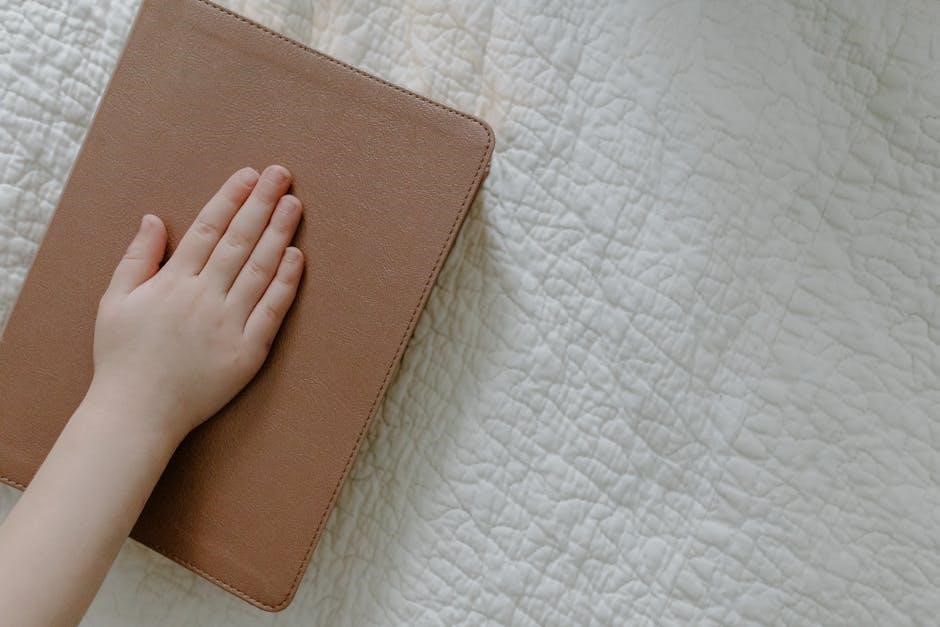
Common Mistakes to Avoid
Avoid inaccurate cutting, inconsistent seam allowances, and improper fabric alignment. These errors can lead to misshapen blocks and a less polished finished quilt.
9.1 Avoiding Fabric Mismatch
Ensuring fabric compatibility is crucial for a harmonious Jacobs Ladder quilt. Choose fabrics with complementary colors and patterns to maintain visual balance. Select a dominant fabric for focus, and use lighter and darker shades to create contrast. Avoid clashing prints by sticking to a cohesive theme or palette. Test fabric combinations before cutting to ensure they blend well. Using a unifying background fabric can tie the design together. Always prewash fabrics to prevent shrinkage discrepancies. Proper planning prevents mismatched blocks and enhances the quilt’s overall aesthetic appeal.
9.2 Ensuring Proper Alignment
Accurate alignment is essential for the Jacobs Ladder quilt’s geometric precision. Use a rotary cutter and mat for exact cuts, and employ pins to secure fabric pieces before sewing. Press seams consistently to maintain flatness and avoid distortion. Align block components carefully, ensuring half-square triangles and four-patch units fit seamlessly. Double-check intersections and corners for proper matching. Using a design wall can help visualize the layout and ensure symmetry. Precision in alignment enhances the quilt’s visual appeal and professional finish, making it a standout piece.
9.3 Managing Seam Allowances
Accurate seam allowances are crucial for the Jacobs Ladder quilt’s success. Use a consistent 1/4-inch seam throughout to ensure blocks fit together perfectly. Before sewing, double-check that fabric edges align precisely. Press seams flat in the same direction to avoid bulk and maintain a smooth finish. Use a rotary cutter and mat for precise cuts, and consider a 1/4-inch foot on your sewing machine for consistent stitching. Properly managed seams ensure the quilt’s geometric patterns align seamlessly, resulting in a professional and polished finish.
The Jacobs Ladder quilt pattern offers timeless appeal, versatility, and creative satisfaction. With its free PDF availability, quilters can easily embark on crafting this classic design.
10.1 Final Thoughts on the Jacobs Ladder Quilt
The Jacobs Ladder quilt pattern is a timeless classic, offering versatility and creative freedom. Its simplicity and elegance make it suitable for all skill levels, from beginners to experienced quilters. The availability of free PDF patterns adds convenience, allowing crafters to explore this design without cost. Whether creating a full-size quilt, baby blanket, or home decor item, the Jacobs Ladder pattern delivers a sense of accomplishment and pride. It’s a beautiful way to preserve quilting traditions while adding a personal touch to your projects.
10.2 Encouragement to Start Your Project
Embark on your Jacobs Ladder quilt journey with confidence! This pattern’s simplicity and flexibility make it a rewarding project for quilters of all levels. With free PDF resources readily available, you can begin crafting your unique design instantly. Whether you’re creating a cozy lap quilt or a vibrant wall hanging, the process is both therapeutic and fulfilling. Don’t hesitate—gather your materials, follow the guide, and let your creativity shine. The satisfaction of completing a handmade quilt is unparalleled, and this pattern ensures a beautiful result every time.
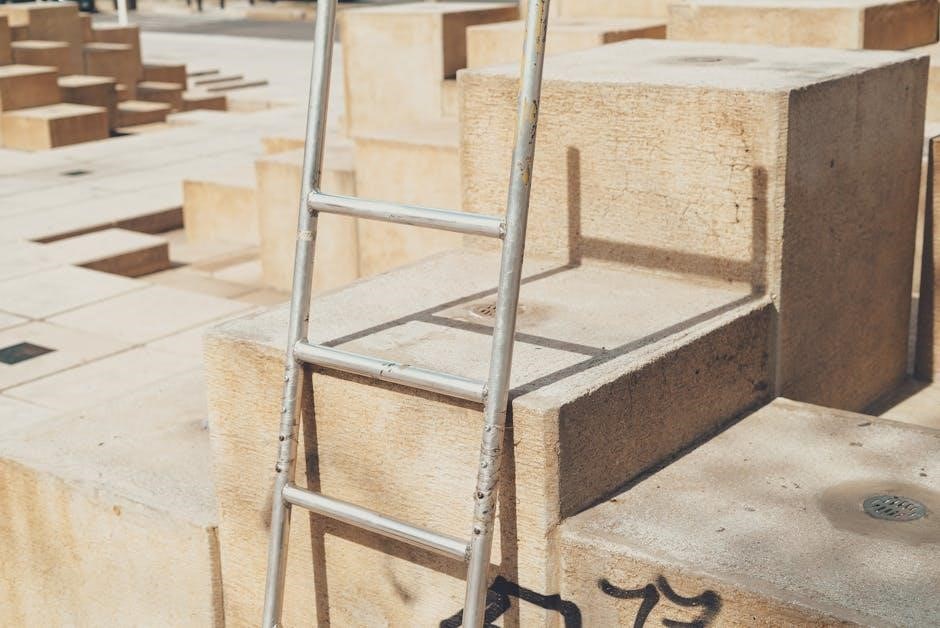
Additional Resources
Explore recommended tutorials, guides, and communities for further inspiration; Visit Fat Quarter Shop and The Quilting Land for free PDF patterns and step-by-step instructions. Join quilting forums for support and tips to enhance your Jacobs Ladder quilt project.
11.1 Recommended Tutorials and Guides
Enhance your quilting experience with free PDF guides from Fat Quarter Shop and The Quilting Land. These resources offer detailed step-by-step instructions, video tutorials, and color illustrations. Perfect for beginners and experienced quilters alike, they cover fabric selection, cutting techniques, and assembly. Explore their libraries to master the Jacobs Ladder pattern and create stunning projects. Visit their websites to download and print these invaluable tools, ensuring a smooth and enjoyable crafting journey.
11.2 Joining Quilting Communities
Joining quilting communities is a great way to connect with fellow crafters, share ideas, and gain inspiration. Platforms like Facebook groups and Instagram offer vibrant spaces to showcase your Jacobs Ladder projects. Participate in forums or local quilting guilds to learn tips and tricks. Engage with others who have experience with the pattern, and discover new variations. These communities provide invaluable support, helping you refine your skills and stay motivated throughout your quilting journey. Don’t hesitate to share your creations and learn from others!

